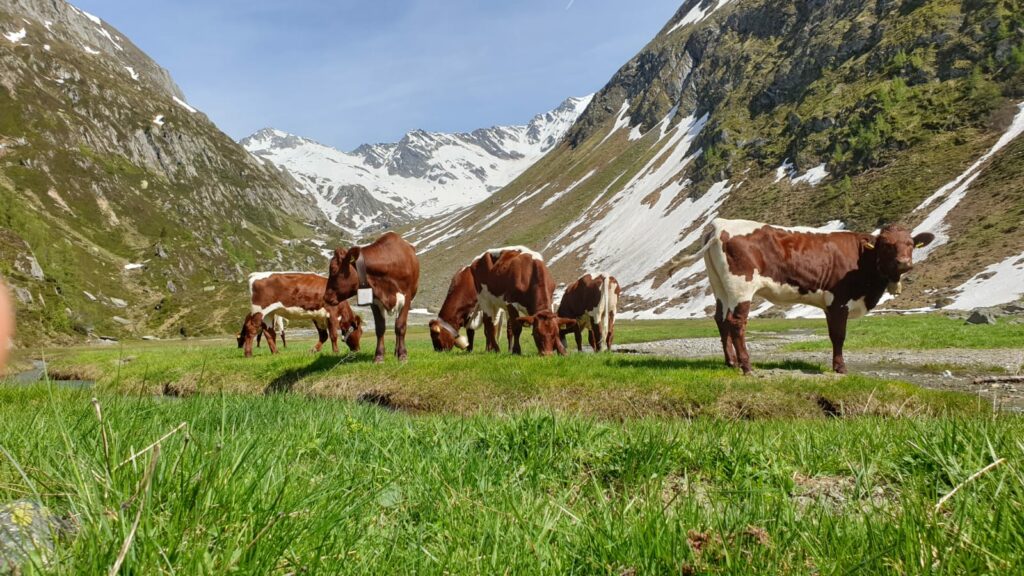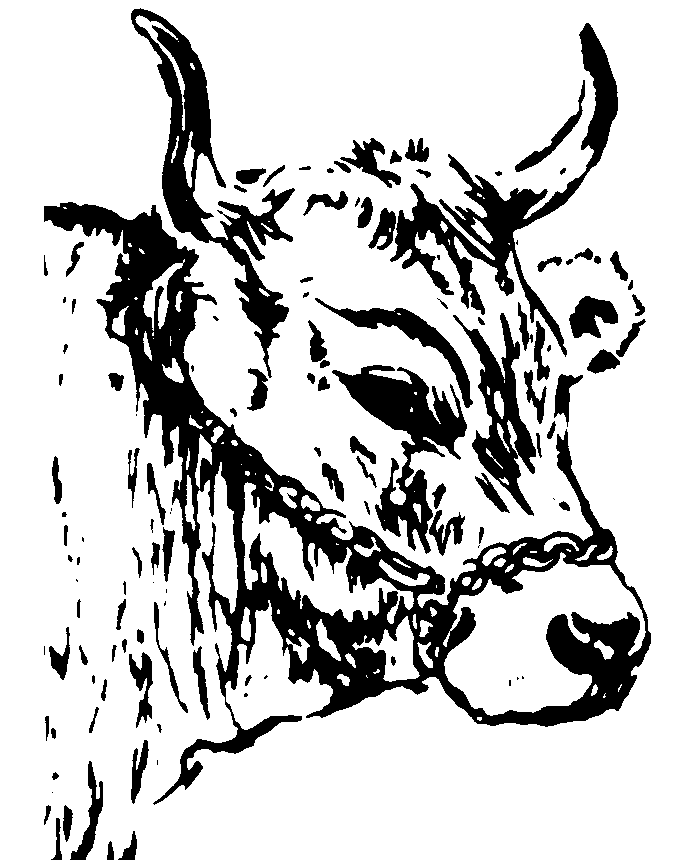CHARACTERISTICS AND PRODUCTION
CHARACTERISTICS
Pinzgauers are medium-sized with a strikingly long rump. The coat colour is chestnut brown with the typical white markings of the breed, a broad white stripe that runs from the withers over the back and rear of the thighs; the belly, lower chest, udder and tail are white. They also have white stripes across the lower leg and upper arm, the so-called “Fatschen”. The muzzle and hooves are dark in colour.
The breed is robust, hardy, able to graze and feed well. Calm in temperament, the breed is characterised by good fertility and adaptability
Adult cows weigh 600 to 700 kg with an average height at the withers of 137 cm, bulls have a weight of 1,000 to 1,100 kg and an average height at the withers of 147 cm.


PRODUCTION
In Italy, the Pinzgauer breed is reared as a dual-purpose dairy and beef cattle, with the emphasis on milk production. The milk is of excellent quality and is suitable both for fresh consumption and for processing into high-quality products.
The meat of Pinzgauer cattle is characterised by its particular tenderness, with the right fibre fineness and marbling.
TABLE WITH PRODUCTION DATA
closed lactations | milk kg | fat % | proteins % | |
Primiparous animals | 63 | 2883 | 3,48 | 3,38 |
Second calving | 57 | 3163 | 3,48 | 3,28 |
Third calving or more | 149 | 3154 | 3,48 | 3,3 |
All | 269 | 3092 | 3,48 | 3,31 |
